#krishna line status
Explore tagged Tumblr posts
Video
youtube
अनमोल वचन - रिश्ता उसी से रखो | True lines ❤️ कड़वा सच anmol vachan "Jay...
#youtube#अनमोल वचन - रिश्ता उसी से रखो#suvichar#quoteoftheday#life quote#anmol vachan#कड़वा सच#true lines#motivating quotes#Jay shree Krishna#yt status#yt shorts#short#short video#motivationalquotes
0 notes
Text
My own submission for day 1 of @pandavapanchaliweek! This was one I struggled with for a long time, and I still have so much to say about these two but I'll shut up for now. Word count: 1777 Characters/Relationship: Yudhishthira x Draupadi
Cheluva’s quill tapped a rhythm on the desk as he considered the various parchments spread across it. His gaze fell on one particular parchment, the parchment which held the main draft for his very first chapter.
Indraprastha glimmers.
At least, that was the only word that he could come up with. Without falling short. Even then, it fell short.
Sunlight bounces off the golden pillars that are the foundation of the courtroom, and reflects off the marbled floors that are cool to the touch. It illuminates the surprisingly simplistic figures of stories of yore that are scattered about the towering room, carved into the walls or adorning the hall as statues. It brightens the explosion of colours that enlivens the room: bright silks draped over thrones and cushions, gemstones set into metals that glistened like stars in the morning sky.
It is not just the sunlight.
There is a residue of light in places where it shouldn’t be; not quite the absence of it, but the suggestion of: someone not fully human was here. The gods walk the pathways of this city and the halls of the palaces, mingle with the common people and watch everything play out like spectators instead of judges. They have personal stakes in every situation, every confrontation, not like the distant but warm deities we worship in the south.
Cheluva hummed to himself alongside the rhythmic tapping of his quill as his eyes glided over the well-worn words he had read perhaps a thousand times by now. It was a nervous habit of his; every time he lost track of his thoughts, he would start at the beginning of the chapter to track his threads again.
But he was a writer. And a writer’s mind is most prone to distractions.
He thought about the king and queen.
To continue in the vein that his description of Indraprastha went, Yudhishthira and Krishnaa (“Emphasis on the a—no, it’s a warmer sound, the way we say anna—remember there are multiple Krishnas up north. Yes, including the son of Vasudeva; you’re lucky you get to meet him.”) were very much the crown jewels of Suryadeva’s diadem.
They in the south reached for the sun, proclaiming their devotion to the gods with intricacy and passion: look here; we are where you ought to direct your attention. In the north, everything was more muted. Still. As though the architecture was a mere afterthought; the divinity that filled and illuminated the halls seemed more than enough. They did not need to reach for the sun; they already had it. In their halls.
…wait, why was he thinking in prosaic terms?
And.
That was perfect for a comparison between the north and the south, especially considering the light metaphor he had already been using. He quickly grabbed another piece of parchment, which had all of his first-drafty sentences, and jotted it down before he lost any of the words swirling around in his mind.
Then, he set his quill down and rubbed his wrist, thinking back over the past few days.
The first day he had been here, the sheer grandeur of the place had nearly overwhelmed him. The austere ostentation of the north was befuddling to him. But he was here for a reason—to observe the royal family and determine if they really were worthy of paying tribute to, and Cheluva was not called the Observer of his royal court for nothing.
Another paragraph, a few lines down, caught his attention.
The throne the Samrajni sits on is the highest throne in the room, save the balcony meant for the Rajamata. Four other thrones flanks the Chakravarti’s, a step below: the ones meant for the four other Pandavas and their wives. Yuvaraja Bhima and Yuvarani Valandharaa typically sit to the right, and the Senapati—when he is present in court, that is (which is rare, so tells me the craft minister)—sits to the left with Yadavakanya Subhadra. The younger twins are seated respectively to their right and left; when the men are not present, it is quite common for their wives to stand-in if their presence is necessary. Perhaps that is an understatement. The royal women are no mere beauty accessories here; they are rulers in their own right.
Cheluva considered his thoughts: he felt nothing but admiration for the Samrajni. He had heard the songs, everyone had. But the strength and patience she must have had, to manage such a complicated life in the antahpura, deal with matters of the state, serve the guests humbly and find time for her family, all the while looking as though she was untouched by any care in the world: that strength was not easily found in any person, mortal or not.
He rubbed his wrist again, absentmindedly, and decided to continue his chapter later. For now, he looked at his notes on the dynamics of the Kuru royals, at least the ones he had managed to observe.
Yudhishthira and Krishnaa were the ones who confused and intrigued him the most.
He still remembered the first time the Samrat had entered the room a little later than usual, on his first day here, and the Samrajni was already engaged in conversation with a minister.
The golden king looks to his dark queen, and all the world is caught in their gaze. They stand on opposite sides of the court, and yet it seems like there is no distance between them at all. Yudhishthira is a king; nothing must escape his sight. That is the way he looks at the court, taking every detail in and fitting them into the bigger picture, but when he looks at Krishnaa, there is the subtle reframing of his entire focus: she becomes the main subject of the art in his eyes. Everything is still present; the background accentuates the subject, but he still gazes at her in a way that is still inexplicable in words. (I am so told that the other Pandavas look at her in a similar way.)
If I may borrow a metaphor from one of my other works, she is the light that living beings find themselves drawn to. That makes Yudhishthira the shadow, for where there is light, there must be shadow
When they are seated side by side, the contrast is enough to have one’s eyes riveted to the front of the room. Dark and gold: their voices are equally quiet but echo with the kinds of power that has only been seen in the heavens. I have heard parallels being drawn between them and Vaasudeva with Rukmini, but as I have not yet had the good fortune to meet the latter, I may offer no comment on it.
They work together like a particularly well-oiled machine. The king anticipates the word of his queen before she even speaks; she, in turn, knows the exact manner in which to evoke the response she desires from him. Krishnaa is fire’s daughter indeed, as the bards have told us, and Yudhishthira is the mountains’ son. The constant push-and-pull between them that is somehow never significantly frictional is what makes their rule so in tandem, so harmonious. Yudhishthira is contemplative, sometimes too forgiving. Krishnaa is more assertive, more adaptive.
Alone, either may falter: the king might be too forgiving, the queen too relentless. But together, they create a balance, their differences sharpening each other like flint against steel.
Cheluva exhaled sharply, pressing his lips together. His eyes burned from reading in the low firelight, and he rose from his seat, walking over to the balcony.
As he leaned out over the parapet, eyes distantly tracing the rise and slope of the buildings in the vast expanse across him. For such a new kingdom-state, it was very well constructed.
If he were to take the analogy of light and shadow he had used in his works, he pondered, what would he assign to the king and queen?
It was not an easy analogy.
It was simple to say Yudhishthira was the light—steady, unwavering, illuminating the path of dharma with his gentle glow. He was the sun at dawn, rising quietly to guide the day, promising warmth and peace. To say Krishnaa was a shadow would not be incorrect: she moved with the silence of one, always watching, always in motion, shifting and shaping herself to meet the moment. She was the shade that gave relief when the light was too bright, but also the darkness that demanded action when complacency threatened to stagnate them. Without her, the world Yudhishthira sought to illuminate would lack depth and definition.
But then, she was fire’s daughter too. Blazing, gentle, but impossible to ignore. In her quiet voice that carried power, she blazed a trail. A path that others could follow. Her light pierced, it exposed, it demanded action. Yudhishthira too, could be shadow, tempering her light with his immeasurable restraint. He absorbed the chaos of the world around him, holding it in stillness, waiting for the right moment to act. But in his silence, he could linger too long, risking stagnation, letting the shadow grow when the world needed light to break through.
No matter them being either-or. They were both.
They were, together, the balance of the universe: the light that revealed the way and the shadow that forced the world to confront its truths. Where one faltered, the other rose, and in their harmony, they created a world not of perfection but of meaning.
For what is light without shadow but emptiness? And what is shadow without light but oblivion? They were both, and because of this, they endured.
“I hear the Samrajni and Samrat had another disagreement,” giggled a woman’s voice from below Cheluva’s balcony. Perhaps one of the maids. A younger one, at that.
“I don’t think so. You should know by now that Panchalakumari and Dharmaraja don’t actually disagree; they might differ in their opinions of how to handle matters, but they always, always reason it out with each other. No matter how impassioned the queen is, or how firm the king is, they balance each other out, and that’s why our kingdom is so stable.”
Cheluva nodded to the stern voice of an older woman, and then he sighed, deciding to go to sleep.
The next morning, as he watched the aarti plate circling the idol of Mahalakshmi, held by Yudhishthira and Krishnaa as their voices, one deep and one high, sang in harmony, Cheluva watched the firelight bounce off the walls and illuminating their faces. The interplay of light and shadow highlighted their features and Cheluva smiled quietly to himself.
What an overextension of a metaphor.
But an apt one, nonetheless.
#mahabharat#mahabharata#yudhishthira#draupadi#yudhishthira x draupadi#pandavapanchaliweek#day 1: yudhishthira and draupadi
21 notes
·
View notes
Text
Krishna: a character adored for over two thousand years, revered as one of the most significant political masterminds of the ancient world with his words forming the philosophical core of the country today. Concurrently, he is the god shrouded in inimitable domesticity- as a friend, a lover, and a child. No other deity in the Hindu pantheon has probably achieved as dear a position in the hearts of people as this flute-wielding cowherd of Gokula.
For generations, he has shined as the muse of countless poetfolk, of unfinished business, of unspoken desires and of repressed lovers' qualms. In Meera's longing for her marble beloved, and in Kothai's dulcet dreams of a celestial wedding, Krishna blossoms not as a warrior, but rather as a confidante of young women- the keeper of all secrets.
Curse, o ye, this wedding of devotion,
For I was better off unmarried,
Writes the lovestruck Nawab Sadiq Hilm,
I was well enough at my mother's;
Oh, why did I pine for him?!
Who am I, or what: go ask Rizwan, the gatekeeper
For heaven has been rejected by my forebearers!
He says, in a nostalgic ode to the cowmaids from old tales. To the ones that massage the dust off their feet on Krishna's fevered forehead to soothe his illness, even as the apparent disrespect dooms their afterlives.
Jayadeva notes a more rugged form of Krishna, one that is almost hungry for love. His Radha smiles down upon Radharaman Dutta's kalankini. Of course, she would accept even infamy if it was in relation to her Krishna. However, in time, this epithet has been reclaimed as a celebration of the meteoric, tempestuous love that this unseemly duo had carved out for themselves of the pages of a mostly unwilling history.
Tagore's Krishna is mysterious, eagerly anticipated but rarely seen. Rather, here Radha's pining is crushing and all-encompassing, inherited from Chandidas' virahini. Radha's guttural desire to transform Krishna into herself, subjecting him to the same suffering that she undergoes as a woman in love with a furious ideology more than a man, reverberates eerily against the lighthearted cross-dressing tale of Surdas'.
As often as bards favour the songs extolling the love of the cowherd and the wedded maiden, Krishna's wives are seldom accorded any thought outside of Vasudeva's family tree. Their silence speaks to the stringent rules of a typical patriarchal household. Some of them do speak, and hence Satyabhama becomes conceited and Kalindi wayward. However, the mere few lines that they are mercifully allotted in the text are enough to speak to their resilience. The lines inadvertently hold up a window to the million unspoken words and unexchanged glances. It speaks to the long years, happy and sad. It speaks to the nights of waiting for the beloved to return. It speaks to the quiet lunches in curtained rooms and taste tests in the kitchen.
Each of Krishna's eight wives has their own life, and their own equation with Krishna. Each of their distinct personalities, coupled with their unique introductions to the prince has the potential to bring a distinct flavour to the story of Krishna, the statesman. The understanding that Krishna's heart belonged first to Vrindavana and then to his ambition, must have weighed somewhat on their hearts and yet, the choice to patch up the battle-hardened cowherd, after every blow, sans complaint, and send him out into the world as the architect of history, must have demanded restraint.
The distinct turn of events that brings each of the chief eight queens to Krishna's is quite interesting. Rukmini, the first, demonstrates heart, even if it is born out of desperation. Seizing control of her life, she sends a message, relying solely on rumours of his compassion. Her gamble yields returns manifold as Krishna not only rescues her from an unwanted marriage, but instates her as his chief consort, elevating her, alongside himself, to a divine status. Far from the impulsiveness of her youth, Pandhari's Rakhumai, astute beside her beloved, proudly bears a conch-shell, calling for harmony and community. In life as well, Rukmini brings to Krishna much needed stability, and oversees the blossoming of the city of Dwarika as well as Krishna's growing household.
Jambavati and Satyabhama are given in marriage to the prince by their respective fathers and do not seem to have much of a voice at the time. Jambavati fulfills an ancient destiny, a forgotten promise, then going on to mother the child that ultimately brings about the demise of the Yadava clan. Satyabhama, though often maligned with unfair accusations, is self-reliant. Making no attempt to hide herself from the eye of society, takes her rightful place beside Krishna, not on a throne, but by his side in battlefields. Kalindi however, is an extremely interesting character in Krishna's story. Enmeshed between mortal and divine, she exists as neither. Chancing upon the prince, she unabashedly declares her intentions to be married, and yet she is uncharacteristically silent after her marriage. Lakshmana and Mitravinda, are both won in conquest. They might have been able to sympathize with Rukmini, given their kin had turned against them, on account of their choice of a life partner. Bhadra, on the other hand, has no fancy contests to boast of, or an adventurous rescue. She marries Krishna at the behest of her brother, the only highlight being the arduous journey she undertakes from Kekaya to Dwarika.
After their marriages, these women practically disappear from the narrative until their last moments. We can assume that they were all presumably content with a life outside the spotlight. One can only hope to be privy to their lives after marriage, to know their dreams, nightmares and daily chores. They enter Krishna's life at crucial junctions, and I choose to believe they each had a unique effect on Krishna's worldview, bringing with them a fresh outlook into the mostly stagnant golden city.
#krishna#radha#original writing#mahabharata#hindu mythology#rukmini#satyabhama#kalindi#desi tumblr#ehi murare#prologue#jambavati#mitravinda#lakshmana#bhadra#nagnajiti
194 notes
·
View notes
Text
Chapter 8
The petals gently flew around as she placed it on the thaali and folded her hands, bowing in the temple in front of her God's idol. And then she sighed, looking up.
Shlokaa met Ram ji's eyes. He was looking as serene and beautiful as ever, one hand outstretched for giving blessings and the other clutching his bow. His strong wife, Sita right next to him adorned in a bright fire and white coloured sari, and his beloved brother Lakshman on the other side, all three in similar poses - as if they were carved out of the same heavenly element. And their dearest devotee Hanuman at their feet in reverence.
Shlokaa's vision suddenly followed another line and she met Krishna's eyes, whose idol was just in the next mandap. He was smiling enchantingly as he held onto his murli in a breathtaking mudra and by his side, his eternal lover Radha's hand was outstretched to give ashish (somebody had placed a mogra between her fingers so it appeared as though she was offering it as a blessing to her devotees), whose other hand was lovingly holding onto Krishna's shoulder. A spark danced between both their eyes as if they knew something that Shlokaa didn't and were giggling about it with each other. Shlokaa shook her head, finally giving in, and smiled too.
Suddenly somebody put their hand warmly on Shlokaa's shoulder. She immediately turned around to see who it was.
"Hello, Shlokaa beta. Main madad karu?"
The woman gently took the thaali from her hands and helped her place the bhog and flowers to the Gods. Shlokaa looked on, relieved and feeling overwhelmed by this woman's warmth but froze as soon as the woman smiled. That was exactly Vilasini's smile and expression. She could never mistake that face for anybody else, even in a crowd. Never.
Oh God, it was Vilasini's mother.
Before she could run away, Vilasini's mother looked at her with such intent that Shlokaa warmed up again on spot, by that motherly tenderness.
She almost wondered to recollect the last time her own mother had shown such a closeness towards her.
"Darro matt, beta. Main madad hi karna chahti hu tumhari. Bahot pyaari ladki ho." She softly patted Shlokaa's face and whisperer "I know what dilemma Vilasini must've put you in. I know my daughter. I'll help you. Now listen carefully."
"Where are we going?" Vilasini demanded to know but no use. She had asked the same question at least a million times in the past hour but Shlokaa had been silent as a statue. Vilasini had seethed initially but sighed now. Shlokaa on the other hand couldn't even meet Vilasini's eyes.
"Koi crime vrime karne toh nahi jaa rahe na?" Vilasini asked, desperate to get anything out of Shlokaa's mouth now but she just stared back at her. Vilasini groaned.
In reality, Shlokaa hadn't even understood anything Vilasini had asked in hindi except the word "crime". Crime? Really?? What crime?! Vilasini can puppet Shlokaa however she likes, this plan of 'one hour' Vilasini decides upon, everything she does but when it comes to Shlokaa it's a crime??? Does this girl even have ANY IDEA that everything she's doing, everything she has been making Shlokaa feel since day one should be classified as nothing less than a CRIME?
She almost threatened to snap because of such trains of thought when she suddenly heard Vilasini stop in her tracks, take in a sharp breath and breath out slowly. And then Vilasini laughed - making Shlokaa forget everything else in that sound. Finally. Vilasini laughing genuinely after what seemed like centuries to Shlokaa. Shlokaa couldn't help but smile secretly.
They had reached their destination.
It was a big carnival amusement park place. Vilasini took off like a missile to the rollercoaster as Shlokaa momentarily froze upon seeing it but clenched her fists and strode on.
"Everybody please tighten your seatbelts!"
*clink* *clink* They all quickly followed the instructions. Vilasini was still not over the high of finally being on a rollercoaster after so long! How did Shlokaa know she loved this?! She grinned giddily and did the same as others, clasping her belt over herself. She turned over to look at Shlokaa who was sitting beside her. Shlokaa appeared to be numb and white, looking straight ahead as if she had seen a ghost. She was even shivering a bit. Vilasini immediately grew concerned and that's when she realized it. She gritted her teeth and closed her eyes, whispering "oh mummy you.."
Shlokaa suddenly zoned back in and looked at Vilasini who had moved her hand to she keep it over Shlokaa's to steady her. They looked at each other as..
"3,2,1 AND GO!"
Vilasini threw her head back in bliss as her hair flew and eyes closed. And Shlokaa looked at her.
Walking back, Shlokaa's legs felt so wobbly. She also felt pukish and dizzy. Vilasini sighed and feared the worst - that Shlokaa would be throwing up all over soon so she took her over outside the carnival, near an isolated, dark area where a kothi was in ruins.
"Why did you have to do this?"
"Do wh-" Shlokaa buckled over and fell on her knees, hands instantly shooting off to clutch on her stomach.
"THIS" Vilasini gestured wildly at Shlokaa "Why did you listen to my mother? KYA ZAROORAT THHI? Zyaada bhoot tujh jaisi ladki ko chaddha thha mujhe impress KARNE KA?"
Shlokaa felt like crying. She had no idea what Vilasini was shouting. It was all hindi and a headache to deal with right now which was attacking and increasing her already existing, stabbing headache.
"Arey toh mujhe PEHLE THAPPAD KYU MAARA? KABHI BOLTI HAIN MERE LIYE RUK JAAO, KABHI MAARTI HAIN, PHIR WAAPIS PEECHHE PADHKE MUJHE HI GUILTY FEEL KARAATI HAIN. KYU??? KYU?? Kya hain yeh SAB?"
Ahh, guilty. That was the only word Shlokaa caught onto, which was now burying itself mercilessly in her chest like a knife. And Oh God, this headache.. everything was a blur.
"You know what? I know exactly how girls like you are. First you put up this act of 'righteous' homophobia. Then you feel bad but it was all a play pretend anyway coz you wanted to experiment with the other girl all along. But I won't let you use me and then throw away. And before you try anything.." Vilasini halted. Hoping that she'd receive retaliation from Shlokaa who'd shout back just as furiously that she was nothing like that. But she didn't. Not even once.
And what more? The blank expression on Shlokaa's face probably even confirmed the words she was hurling at her, if nothing more.
Something changed inside Vilasini, something happened. And that's when it happened too.
Before Shlokaa could react, Vilasini's lips pressed themselves firmly on hers. They didn't move though. It was a fierce liplock. A revolt. And fireworks. Real fireworks. They actually bursted above them afar in the sky, going off from the carnival.
Vilasini tasted like honeyed snow. And Shlokaa's lips were softer, warmer and more desperate.
If Shlokaa could fall further by the impact, she would have. But she was already on her knees. A small sound escaped her own lips when they parted from Vilasini's, almost like a retaliation now.
"And before you try anything..." Vilasini whispered "let me use and throw you away instead." She breathed deep again "This is what you wanted, didn't you? All this tamasha to experiment with me? Well, you've got it now. Goodbye."
And just like that, Vilasini vanished in the shadows, leaving Shlokaa alone in the ruins.
#I don't write for months but when I do I make the girlies kiss hehehehe#and that's on being gay#desiblr#desi wlw
24 notes
·
View notes
Text
Discover the Magic of a Kathmandu Day Tour: A Cultural Adventure in One Day
If you’re short on time but want to soak up the rich history, vibrant culture, and spiritual energy of Nepal’s capital, a Kathmandu Day Tour is the perfect choice. This one-day journey takes you through centuries-old temples, UNESCO World Heritage Sites, and bustling local markets — all packed within the colorful chaos of the Kathmandu Valley.
Whether you’re a history buff, a spiritual seeker, or just a curious traveler, this 1 day Kathmandu tour offers a window into the soul of Nepal. Let’s dive into what makes a day tour in Kathmandu truly unforgettable.
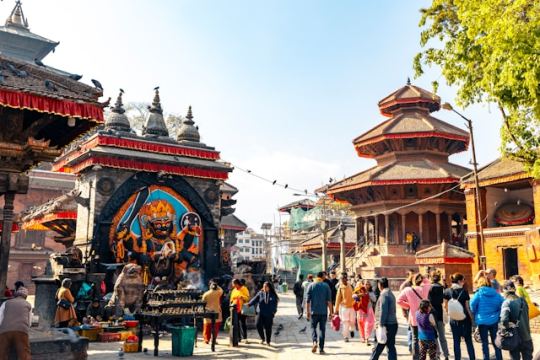
Why Choose a Kathmandu Day Tour?
Kathmandu is a city where the ancient meets the modern, where every alley whispers tales from centuries past. A Kathmandu sightseeing tour is ideal for travelers who:
Have limited time but want a meaningful travel experience
Prefer a guided tour in Kathmandu with expert local insights
Want to cover the best places to visit in Kathmandu in one day
Are curious about Nepalese culture, architecture, and traditions
With the right guide or tour company, you can see the city’s highlights in a day without feeling rushed.
Morning: Spiritual Vibes at Pashupatinath and Boudhanath
Start your Kathmandu city tour early with a visit to Pashupatinath Temple, one of the holiest Hindu temples dedicated to Lord Shiva. Located on the banks of the Bagmati River, this site is not just a religious center but also a place of deep spiritual significance. If you're lucky, you may witness a traditional cremation ceremony — a profound moment that offers insight into Nepalese life and death rituals.
Just a short drive away lies the serene Boudhanath Stupa, a massive mandala-shaped structure and one of the largest stupas in the world. The surrounding area is rich with Tibetan Buddhist culture, prayer wheels, and monks in maroon robes.
Midday: Exploring the Historic Heart at Kathmandu Durbar Square
After a peaceful morning, head to Kathmandu Durbar Square, a UNESCO World Heritage Site and the historical palace complex of the Malla kings. The area is full of ancient temples, statues, and courtyards that reflect the artistic brilliance of the Newar craftsmen.
Don't miss the Kumari Ghar, the residence of the Living Goddess — a young girl worshipped as a deity. If the timing’s right, you might catch a glimpse of her from the balcony!
Enjoy lunch at a local Newari restaurant and taste authentic dishes like momo (dumplings), chatamari (rice pancake), and bara (lentil patties).
Afternoon: Patan or Swayambhunath?
Depending on your pace and interest, you can tailor the afternoon part of your private Kathmandu tour:
Patan Durbar Square
Cross the Bagmati River to visit Patan, a city known for its exquisite temples and metalwork. The Patan Durbar Square complex is an architectural masterpiece, with temples like Krishna Mandir and Hiranya Varna Mahavihar (Golden Temple).
Swayambhunath (Monkey Temple)
Alternatively, you can climb up to Swayambhunath Stupa, perched on a hill with panoramic views of the city. Also known as the Monkey Temple, this site is sacred to both Hindus and Buddhists and features a mix of stupas, shrines, and fluttering prayer flags.
Evening: Shopping and Sunset in Thamel
End your full-day Kathmandu city tour with some leisure time in Thamel, Kathmandu’s bustling tourist hub. This is the perfect place to shop for souvenirs, handicrafts, singing bowls, or just relax with a cup of masala tea.
As the sun sets, the golden hues reflect on temple roofs, creating a magical atmosphere. Enjoy a traditional Nepali dinner with cultural music before you wrap up your day.
How to Plan the Perfect Kathmandu Day Tour
Book a Local Guide or Tour Package
Going with a trusted local company ensures that your time is managed well. A guided tour in Kathmandu helps you skip lines, understand the cultural context, and interact with locals meaningfully.
Customize Your Route
A good Kathmandu heritage tour should be flexible. If you’re more into spirituality, focus on temples. If you're a history lover, spend more time in the palace squares.
Dress Respectfully
When visiting temples and monasteries, modest clothing is appreciated. Always remove shoes before entering sacred spaces.
Start Early
Traffic can get busy in Kathmandu. Starting your Kathmandu day tour by 8:00 am allows you to make the most of your itinerary without stress.
Final Thoughts
A Kathmandu day tour is more than just sightseeing — it’s a cultural deep dive into one of South Asia’s most fascinating capitals. In just one day, you’ll witness spiritual ceremonies, architectural wonders, and warm local hospitality.
From the holy chants at Pashupatinath to the prayer flags of Swayambhunath and the artistic gems of Patan, Kathmandu is a city that speaks to the soul. So even if you have just 24 hours, make it count with a well-planned Kathmandu sightseeing tour that leaves you with memories (and photos) to cherish forever.
#1 day kathmandu tour#cultural tour in kathmandu#kathmandu city tour#kathmandu day tour#UNESCO heritage sites
0 notes
Text
Marble Shrinathji Statues: The Rajasthani Artistic Touch
In the colorful heartland of Rajasthan, where tradition meets timeless artistry, the divine image of Lord Shrinathji stands as a symbol of faith, beauty, and devotion. Revered by Vaishnavas around the world, Shrinathji is the child form of Lord Krishna, celebrated for his divine leelas (miracles) and eternal grace.
At Harishyam Arts, we specialize in bringing this divine form to life through exquisitely carved Lord Shrinathji Marble Idols—each one infused with the heritage, elegance, and intricate detailing that Rajasthani art is renowned for.
The Spiritual Significance of Shrinathji
Shrinathji is traditionally depicted lifting the Govardhan Hill with his left hand while his right hand rests on his waist—a moment immortalized in the famous episode from the Bhagavata Purana. This divine pose reflects strength, protection, and compassion.
A Handcrafted Marble Shrinathji Statue not only captures this divine story but becomes a spiritual centerpiece in temples and homes alike. Whether placed in a grand haveli mandir or a modern pooja room, the presence of Shrinathji radiates devotion and joy.
The Rajasthani Touch: Tradition in Every Carve
Rajasthan has long been a cradle of temple sculpture, and our Traditional Marble Shri Nath Ji Statues are rooted in this legacy. What sets them apart is not just the quality of marble, but the exceptional craftsmanship behind each piece.
Key Features of Our Shrinathji Marble Statues:
💎 Elaborate Ornamentation: From the mukut (crown) to the angavastra (cloth), each detail is carved with care to reflect traditional Pushtimarg symbolism.
🎨 Expressive Eyes and Graceful Posture: Rajasthani artistry is evident in the idol’s serene expression and delicate form.
🧱 Panel Idols: We also offer Shrinathji Panel Idols—perfect for wall-mounted displays or compact mandir setups—carved with high precision for those who seek both art and space efficiency.
Each idol is made from premium Makrana marble and finished by hand to ensure that every line, curve, and expression stays true to devotional tradition.
Styles for Every Space: From Haveli Temples to Contemporary Homes
While many prefer large Lord Shrinathji Marble Idols for temple installations, Harishyam Arts also crafts mid-sized and compact murtis for home use. We work with both traditional and modern mandir setups:
🛕 Traditional Marble Mandirs: Richly carved, ideal for temple rooms and havelis.
🧱 Panel Idols: A smart choice for devotees with limited space or who prefer a mural-style presentation.
🏠 Custom Temple Solutions: We also design and supply Corian and wooden mandirs that perfectly complement your Shrinathji statue.
Why Choose Harishyam Arts?
As one of Jaipur’s most trusted names in religious sculpture, Harishyam Arts is committed to delivering devotion in its purest form.
✅ Handcrafted Marble Shrinathji Statues by experienced artisans
🧱 Panel Idols and full-figure statues tailored to your space
📐 Custom sizes and poses, with attention to Pushtimarg standards
🌍 Worldwide shipping and support for mandir planning and installation
Each statue is a labor of love and prayer, crafted not only to meet artistic standards—but to serve as a divine presence in your life.
Final Thoughts
A Lord Shrinathji Marble Idol from Harishyam Arts is more than a sculpture—it is an heirloom of faith, a celebration of Rajasthani artistry, and a bridge between tradition and today. Whether you seek a traditional Shri Nath Ji statue or a contemporary panel idol for your home, we are here to bring your spiritual vision to life—carved in timeless marble.
0 notes
Text
Category: Festivals & Spiritual Events
Date: 4th June 2025
Time: 6:30 PM IST
Read Time: ⏱ 4–5 min read
---
🚩 Jagannath Rath Yatra:
Every year, millions gather in the holy city of Puri, Odisha, not just to witness — but to pull the chariot of God Himself. The Jagannath Rath Yatra is more than a festival — it’s a divine journey that blurs the lines between heaven and earth, temple and street, king and devotee.
---
🛕 What is the Jagannath Rath Yatra?
The Jagannath Rath Yatra is a grand annual procession where Lord Jagannath (form of Krishna), along with brother Balabhadra and sister Subhadra, leaves His temple and travels to Gundicha Temple — considered His mausi’s (aunt’s) home.
It’s believed that during this journey:
The Lord comes out to bless all with his divine presence
And walks among His devotees like a common man.
Spiritual Significance
Symbol of Moksha (liberation): The Lord steps out, signifying that divine grace is accessible to all.
Rath = Life Journey: The chariot is symbolic of the body, the Lord is the soul, and the ropes are devotion that pull us toward salvation.
Unity in diversity: From kings to common man, all pull the same rath — dissolving ego, caste, and status.
🚩 The Three Rathas (Chariots)
Every year, three new giant wooden chariots are constructed using Neem wood, carved by traditional artisans with divine rituals. No nails are used — just devotion and sacred architecture.
The Chariot Names & Details:
1. Nandighosh – Lord Jagannath’s Rath
Height: ~45 feet
Wheels: 16
Color: Red & Yellow
Emblem: Garuda
2. Taladhwaja – Balabhadra’s Rath
Height: ~44 feet
Wheels: 14
Color: Red & Green
Emblem: Hanuman
3. Darpadalan – Subhadra’s Rath
Height: ~43 feet
Wheels: 12
Color: Red & Black
Emblem: Lotus
Each rath has a unique flag, deity, and set of rituals. The chariots don’t move until devotional celebrations and kirtan begin — as if the Lord waits for true bhakti before proceeding.
Rituals Before the Yatra
Snan Yatra (Divine Bath): A few days before Rath Yatra, the deities are bathed with 108 pitchers of water.
Anavasara: After the bath, the deities fall ‘ill’ and rest inside the temple (believed to have fever). The temple remains closed for a week — the Lord rejuvenates before the yatra.
Netrotsav: One day before the yatra, the eyes of the deities are repainted. It is believed that this renews their divine vision.
- Rath Yatra in Ahmedabad
Did you know that Ahmedabad hosts India’s second-largest Jagannath Rath Yatra after Puri?
Organized by the Jagannath Mandir in Jamalpur, this grand procession has been celebrated for over 140 years.
Elephants, akharas, decorated raths, and thousands of devotees join this spectacular Gujarat-style celebration.
Route: The Rath Yatra winds through the old city, echoing with chants of “Jai Jagannath!”
Even if you can’t go to Puri, Ahmedabad Rath Yatra is a must-attend spiritual experience for devotees in western India.
The True Essence
Jagannath Rath Yatra reminds us that:
The divine doesn’t wait inside marble temples — He walks among His people.
God loves simplicity and sincerity — not gold or offerings, but hearts pulled with love.
Life is a rath — full of movement, turns, effort, and devotion. And Lord Jagannath is the one guiding the wheels.
📲 Watch the Yatra Live with Bhakti
Can’t travel to Puri or Ahmedabad this year? No worries.
LiveBhagwan.com brings the divine chariots to your screen.
🎥 Watch live darshan,
🎶 Listen to kirtans,
📿 And begin your day with the sacred sight of Lord Jagannath on His rath.
👉 Visit: www.livebhagwan.com/darshan.php
Final Thought
Let’s not miss this chance to witness, chant, and celebrate.
Pull the chariot with your heart — He will surely arrive.
0 notes
Text
Radha Krishna Marble Moorti: Best Designs for Home Decor 2025
In 2025, home decor trends are seeing a beautiful blend of tradition and elegance, with Radha Krishna marble moorti designs emerging as a timeless favorite. These sacred sculptures not only add spiritual charm but also elevate the aesthetic appeal of any living space. Whether you are a devotee or an art enthusiast, incorporating a Radha Krishna marble statue into your home decor can create an ambiance of peace, love, and devotion.

Why Choose a Radha Krishna Marble Moorti for Home Decor?
The Radha Krishna marble moorti symbolizes eternal love, divine connection, and harmony. Carved from high-quality marble, these statues bring a sense of purity and tranquility. Their presence is believed to attract positive energy and blessings, making them perfect for home temples, living rooms, or meditation corners.
Top Designs to Consider in 2025
Classic White Marble Moorti
The pristine beauty of a pure white Radha Krishna marble statue remains a top choice. The fine detailing on Radha's attire and Krishna's flute-playing pose adds a graceful touch to modern and traditional interiors alike.
ISKCON Radha Krishna Marble Statue
Inspired by the International Society for Krishna Consciousness (ISKCON), these statues capture the essence of devotional art. The ISKCON Radha Krishna marble moorti often features intricate jewelry, vibrant attire, and expressive faces that reflect divine bliss.
Antique Finish Moorti
For those seeking a vintage appeal, antique finish Radha Krishna marble moortis are an excellent choice. The subtle color tones and aged textures blend seamlessly with rustic and heritage-themed decors.
Contemporary Minimalist Designs
Minimalist Radha Krishna marble statues with smooth lines and simplified features are gaining popularity in modern homes. These designs provide a spiritual touch without overwhelming contemporary decor styles.
Customized and Handcrafted Moortis
In 2025, personalization is a growing trend. Many artisans offer customized Radha Krishna marble moorti creations, allowing homeowners to choose specific poses, sizes, and embellishments to match their personal style and space requirements.
Tips for Placing Your Radha Krishna Marble Statue at Home
Place the moorti in a clean and elevated space, preferably in the northeast direction.
Ensure proper lighting to highlight the intricate details.
Keep the area around the statue clean and adorned with fresh flowers or diyas.
Avoid placing the moorti directly on the floor; use a dedicated pedestal or altar.
Conclusion
As you explore home decor options for 2025, a Radha Krishna marble moorti stands out as a symbol of divine love and aesthetic sophistication. Whether you choose an ISKCON Radha Krishna marble statue or a minimalist contemporary design, these sacred sculptures will enrich your home with positivity, devotion, and timeless beauty. Embrace this blend of spirituality and artistry to transform your living space into a sanctuary of peace and elegance.
0 notes
Text
Find the Divine Glory of Shri Radha Raman Ji Temple in Vrindavan
Find the Divine Glory of Shri Radha Raman Ji Temple in Vrindavan
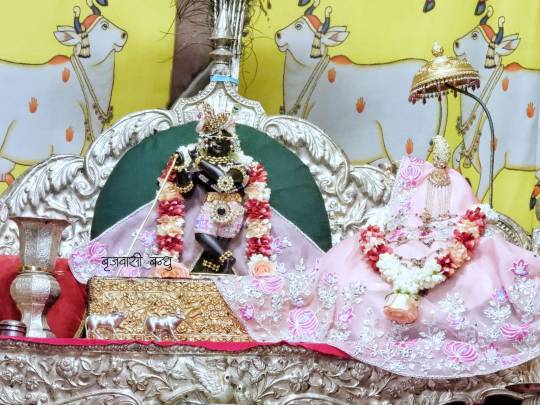
Concealed in India's spiritual hinterland, Vrindavan is a holy town steeped in the divine pastimes of Lord Krishna. Amidst its scores of temples, the Shri Radha Raman Ji Temple in Vrindavan is a symbol of living devotion, tradition, and divine love. With its historical roots and mystical ambiance, the temple is still drawing devotees from across the globe.
A Sacred History Carved in Faith
The Shri Radha Raman Ji Temple in Vrindavan was established in 1542 by the illustrious saint Gopala Bhatta Goswami, a devotee of Chaitanya Mahaprabhu. What makes this temple so special is the dearest deity of Radha Raman Ji himself—self-manifested from a divine Shaligram Shila. This phenomenal occurrence is still celebrated today, making the temple one of the most spiritually charged places in all of Vrindavan.
Unlike all other temples where the idols are sculpted by craftsmen, the central deity in Shri Radha Raman Ji Temple in Vrindavan is said to have manifested itself automatically, a gift from the divine realm. This holy tale contributes to the mystique that surrounds all those who enter the temple's courtyard.
Architecture That Reflects Devotion
Although the smallest in terms of size, the Shri Radha Raman Ji Temple in Vrindavan has elaborate architecture that is a mix of Rajasthani and classic North Indian temple traditions. The central shrine is a sanctum of serenity and minimalism, where the exquisitely detailed black stone statue of Radha Raman Ji is dressed daily in lavish attire and accessories.
The temple does not possess an independent idol of Radha Rani, but she is believed to be present with Radha Raman Ji everywhere. This spiritual enigma attracts aspirants who want to experience the divine union of Radha and Krishna in its subtlest form, which is eternal.
Daily Worship and Celebrations
Every day at the Shri Radha Raman Ji Temple in Vrindavan starts early in the morning with Mangala Aarti and ends late at night with Shayan Aarti, providing devotees with an opportunity to practice uninterrupted worship. The rituals, which are considered precise and spiritually charged, are conducted by descendants of Gopala Bhatta Goswami, maintaining the original line and traditions alive.
Festivals such as Janmashtami, Radhashtami, Holi, and the appearance day of the temple are celebrated in great fervor. On these days, the temple is decorated with thousands of lights, resound with devotional songs, and filled with the fragrance of flowers and incense, making it a spiritual experience to remember.
A Journey Within: Spiritual Significance
For seekers of the spirit, more than a darshan is available at the Shri Radha Raman Ji Temple in Vrindavan—transformation. Here is a living school for devotion where one may see the interplay of strict practice and heartfelt surrender.
Countless saints, scholars, and believers spent decades in the vicinity of the temple, contemplating the divine form of Radha Raman Ji. The temple has generated reams of bhakti literature and remains the keystone of the Gaudiya Vaishnav school of thought.
Bridging Past and Present: The Role of shriradharaman
In today’s fast-paced world, the deep spiritual essence of Vrindavan is often hard to access—unless you have a trusted companion on your journey. This is where the brand shriradharaman steps in.
Committed to imparting the true essence of the Shri Radha Raman Ji Temple in Vrindavan, shriradharaman provides a select assortment of devotional products, prasadam, handmade idols, and puja tools. For people unable to travel to Vrindavan themselves, shriradharaman brings the temple's divine energy to their doorstep.
With each item and gift, shriradharaman ensures the divine presence of Shri Radha Raman Ji continues to bestow blessings on lives globally.
A Pilgrim's and Seeker's Must-Visit
A trip to the Shri Radha Raman Ji Temple in Vrindavan is a religious experience like no other. Walking through its narrow streets, lined with the chanting of "Radhe Radhe," and into the temple courtyard, a sense of peace and divinity envelops you.
Whether you're a lifelong believer or an interested visitor, the temple provides a feeling of unity that transcends religion. It is a location where the divine love of Radha and Krishna is not only recalled—it's experienced.
How to Reach
Vrindavan is easily reachable by car and train from Delhi and Agra. Once there, the Shri Radha Raman Ji Temple in Vrindavan is situated in the older half of Vrindavan, near to other famous temples such as Banke Bihari and Radha Vallabh. Local guides or rickshaws can escort you there, or you can follow the chanting footpaths—it's not that easy to miss.
Final Thoughts

The Shri Radha Raman Ji Temple in Vrindavan is a place more than historical significance; it's a pulsing heartbeat of faith. To those looking for divine love, spiritual insight, and a closer bond with Lord Krishna, the temple provides an entryway into eternal bliss.
And with shriradharaman serving as a bridge between ancient devotion and modern seekers, the blessings of Radha Raman Ji can be felt by hearts across the globe—one puja, one prayer, and one step at a time.
0 notes
Text
How long does it take to reverse fatty liver
Fatty liver disease is a growing concern in modern healthcare, often going unnoticed until it leads to more serious complications. One of the most frequently asked questions Dr. Aswin Krishna receives from patients is: “How long does it take to reverse fatty liver?” The answer isn’t one-size-fits-all, but the good news is that with timely intervention and the right lifestyle changes, fatty liver can be reversed.
In this guide, Dr. Aswin Krishna walks you through what fatty liver disease is, how long it takes to reverse it, and the steps you can take to regain control over your liver health starting today.

What Is Fatty Liver Disease?
Fatty liver disease occurs when fat accumulates in the liver and makes up more than 5% of its weight. This buildup can interfere with normal liver function, leading to inflammation or even scarring if left untreated. There are two main types of fatty liver disease:
1. Alcoholic Fatty Liver Disease (ALD)
This form is caused by excessive alcohol consumption. When alcohol intake is reduced or eliminated, the liver often begins to heal on its own. Recovery may start within weeks, especially in the early stages.
2. Non-Alcoholic Fatty Liver Disease (NAFLD)
NAFLD affects people who consume little to no alcohol. It is commonly associated with conditions like obesity, high cholesterol, insulin resistance, and type 2 diabetes. It is the most prevalent type of fatty liver today, especially due to sedentary lifestyles and poor dietary habits.
Dr. Aswin Krishna explains that identifying which type of fatty liver disease a patient has is key to tailoring the right treatment plan and understanding the timeline for recovery.
How Long Does It Take to Reverse Fatty Liver?
The timeline for reversing fatty liver varies based on individual health status, the severity of the condition, and how consistently lifestyle changes are followed.
Mild Fatty Liver
Patients with mild fatty liver can see improvement within 3 to 6 months. Dr. Aswin Krishna emphasizes that losing just 5–10% of body weight can make a substantial difference in liver fat levels and enzyme activity.
Moderate to Severe Fatty Liver
In more advanced cases, especially when inflammation or fibrosis is present, it can take a year or more to see full reversal. While scarring (cirrhosis) may not be fully reversible, its progression can often be stopped or slowed significantly.
Dr. Aswin Krishna notes that every individual responds differently, and regular monitoring and customized plans are essential.
Steps to Reverse Fatty Liver
Reversing fatty liver requires a dedicated and consistent approach. Here are the most effective steps recommended by Dr. Aswin Krishna:
1. Adopt a Fatty Liver-Friendly Diet
A liver-friendly diet is your first line of defense. Focus on whole, unprocessed foods that support liver function and reduce inflammation.
Foods to Eat:
Leafy greens (kale, spinach): Loaded with nutrients and antioxidants.
Fatty fish (salmon, mackerel): Rich in omega-3 fatty acids to reduce liver fat.
Avocados and nuts: Provide healthy fats and fiber.
Berries and citrus fruits: High in antioxidants to combat inflammation.
Whole grains (brown rice, oats, quinoa): Help regulate blood sugar and insulin levels.
Foods to Avoid:
Sugary beverages: Soft drinks and fruit juices contribute to liver fat buildup.
Red meats and processed foods: High in saturated fats and preservatives.
Fried foods: Heavy in trans fats, they strain the liver further.
Alcohol: Should be completely avoided, especially if diagnosed with ALD.
Dr. Aswin Krishna often recommends a Mediterranean-style diet, which has been proven effective in reducing liver fat and improving overall metabolic health.
2. Exercise Regularly
Regular physical activity is a key component in reversing fatty liver disease. It helps reduce liver fat, improve insulin sensitivity, and support overall weight loss.
Dr. Aswin Krishna’s recommendations:
At least 30 minutes of moderate-intensity activity (like brisk walking or swimming) 5 times a week.
Include strength training twice a week to build muscle and boost metabolism.
Exercise doesn’t just support liver health—it helps manage conditions often linked to fatty liver, such as diabetes and obesity.
3. Avoid Alcohol and Environmental Toxins
Even small amounts of alcohol can worsen fatty liver. Eliminating alcohol is crucial, especially for those with alcoholic fatty liver disease.
Also, avoid exposure to:
Industrial chemicals
Harsh cleaning agents
Over-the-counter medications that may harm the liver if overused
Detoxifying your lifestyle supports faster liver regeneration.
4. Monitor Blood Sugar and Cholesterol
Many people with NAFLD have underlying metabolic issues. Keeping blood sugar and cholesterol levels under control is essential.
Choose low-glycemic index foods, like legumes and whole grains, to prevent insulin spikes. Consider consulting a healthcare provider about managing cholesterol and diabetes if needed.
What’s the Fastest Way to Reduce Fatty Liver?
While there’s no magic bullet, the fastest way to reduce liver fat is to take consistent action across multiple areas of your life.
Quick-Start Checklist:
Begin a clean, liver-supportive diet immediately.
Start daily physical activity, even if it’s light at first.
Stay hydrated to help flush out toxins.
Schedule a checkup with your doctor or liver specialist.
Track progress with blood tests and imaging when advised.
Dr. Aswin Krishna stresses that early action and commitment are what make the biggest difference in speeding up recovery.
Treatment Options for NAFLD
There’s currently no FDA-approved medication specifically for NAFLD, but treatments are available to manage associated conditions and prevent complications.
Options include:
Lifestyle therapy: Diet, weight loss, and physical activity.
Medications: For high cholesterol, diabetes, or high blood pressure.
Supplements: Vitamin E and omega-3s may be recommended in some cases, under supervision.
Regular follow-ups: Ensure liver enzymes and metabolic markers are improving.
Dr. Aswin Krishna works closely with patients to develop a personalized treatment plan that fits their lifestyle and health status.
Conclusion: How Long Does It Take to Reverse Fatty Liver?
Fatty liver disease is a reversible condition but only if you act early and stay consistent with your efforts. Dr. Aswin Krishna emphasizes that mild cases can improve within a few months, while severe cases may take a year or more. Regardless of where you start, it’s never too late to take control of your liver health.
By following a targeted diet, engaging in regular exercise, avoiding harmful substances, and seeking medical guidance, you can reverse fatty liver and protect your long-term well-being.
For tailored advice and support, schedule a consultation with Dr. Aswin Krishna and start your journey toward a healthier liver today. Read Also : https://draswinkrishna.com/signs-your-liver-is-healing/
0 notes
Text
Game of Thrones Irony
In popular media like the epic fantasy novels by George R. R. Martin with the series name A Song of Ice and Fire, there is spectacularly dramatic court intrigue and personal conflict between powerful individual personalities.
These novels are so enjoyable and good to read because they take place in "old-time settings" where that intrigue was mysterious and unknown to all the peasants and billions of people around the world who all go about their lives normally as always, and generally good.
They are misled and betrayed by the intrigue, which is what makes the bad guys so evil as the Cerseis and maesters who give them all their god-power tricks to use.
In formal literary scholarship that phenomena of entertainment media is called irony. I forget which kind. The reader knows all about the intrigue in as personal of a level as the individuals with all their evil and dirty secrets, but the bulk of the population concerned does not know. It's very subtle and invisible, which is why it is so difficult to do as well as George R. R. Martin and Robert Jordan have been able to do.
I also would personally nominate David Eddings and his wife, as well as Brandon Sanderson as honorable mentions to the niche genre in this timeless trade.
C'nedra, my first heartbreaker, and I didn't even notice the pain.
ahem
In real life at present, you can see that there is some evil "Game of Thrones shit" happening on the world stage with those idiots and buffoons like Trump, Biden, and Pompeo.
They are all puppets of some sort. Pompeo being the worst of them because he is the most cowardly and required to be the most honorable. He is a slave to the lobbyists who bought him just as much as Trump is, and neither have any awareness of what Democracy and Freedom is to be able to care, let alone be able to protect this nation that is eternally established for that care in service of all the world (see the statue of liberty).
That will not change. They think they changed it because they took over the government and life is going on like normal. That is not because we need the government doing anything of the sort to inconvenience us. As a matter of fact, people like me don't need a government at all.
We can invent a new one at any time and fill it with new people we inspire with our ideals in bits and pieces that are bite sized and manageable for people to carry through the World Stage and live to see the day after the Lord.
The point is:
What you see in American politics is not intrigue, it is insult. We are not illiterate peasants who are totally oblivious of their shady and evil activities that are intolerable, obviously.
They seem to truly believe we are to have even had the twinkle in their eye to hatch such a scheme.
They need to die as an example. One person for the entire group or they will never stop attacking the USA and trying to take over this place to make it their kingdom.
Just like happened in Jerusalem.
Me? No. Obviously not. That would be the same as Jesus, and that was a tragedy. OBVIOUSLY NOT!!! We'll kill an evil one. The bad guys can die for their own sacrifice if they think it will "save all of humanity" or "just themselves for the benefit of all humanity". Either way one of them will die because they crossed the line and I never believed Jesus needed to die for my sins because... I don't sin.
Not on purpose anyway. Never.
What makes you think "masturbation" is a sin? The Bible? The people who wrote that are the people who killed Jesus to teach you that they were evil and you should forget them and do away with their scriptures and Bible entirely. No need to organize and take action, just forget it and put it away. Done.
It is not important, irrelevant, and there are better ways to learn that common material with the Way of the Story.
"God" is a faith-weapon. That's the only one that they are still attempting to "recreate" to use against God.
That is YHWH, Allah, and Krishna, and is always good because it is a rebuke against an evil test that wants to invent a means of using faith to take money in civilization. The desire to do such a thing is like using God as a bludgeon to steal from the lives of an entire population little by little, and indirectly through spiritual energy.
Believe or don't, you still suffer them if you are enslaved to them by serving the will of usurpers like Trump. I don't intend to allow him to take anything, because I know what he is now that he already tried once and failed. I have faith power as weapon like God in this sense because that is essentially what a man like Trump is doing to a man like me indirectly by thinking of his personal delusion as the universal concept of God shared by people of all religions.
He is like a lay person who went to mass for the first time, saw the priest hold everyone in his thrall, and then went away for decades to plot a scheme that would accomplish the same thing so he could pass around a collection regularly and take money for himself.
All the time planning, he's been provoking people like me to track him down directly, in the flesh, and strike them down with visceral, brutal violence to cease their meddling un public affairs. No reason given.
I already know who needs to die, so I don't need to go anywhere to get him. I just need to point him out: Donald Trump, explain why: treason, prove why: Constitutional Law + UCMJ and then make sure the right person reads that to understand themselves. Then my work is done.
That has already happened long ago and they have done their work. That has not stopped me from ever reaching out to more people so that we all may stop that evil tyrant from ruining all of the world and civilization before it is too late.
They are of course trying to hunt people like me, and we are of course now hunting them. They are finished with a long since accomplished check mate that they still are in denial about.
Flipping over the table and fleeing for the hills because you lost won't change the fact that you lost.
Pawn checkmates king and is promoted to golden general.
A pawn is a peasant without a known name until the moment comes that they attain revelation to a higher power.
A "bastard" like Jon Snow could be any one of the pieces on the board except king or queen. Daenerys and the king being mysterious until checkmated.
That is the fulfilment of the prophecy. Only at the time will we know who that king is, which is to say, who will replace Christ Jesus.
That is mad king even worse than the mad king that cost old boy his hand and none of us blame him for it.
I will remind you of how I envision that epic fantasy series to end, and if George R. R. Martin wants to pass the reins over to me in tradition of famous fantasy authors, I'd be happy to tell you how it goes now:
Kahl Drogo's long lost nephew returns from an expedition in the North of the continent west of Westeros. There he was able to negotiate some sort of agreement with the dead of the frost lands to prevent an invasion on behalf of the Kahl and the Dothraki Hordes. This serves the city wall folk as well, but that is not the concern of the Dothraki and they know nothing of these events.
He becomes aware of current affairs in the world of Ice and Fire, and confronts Daenerys. She marries him and then unites both continents after a final confrontation with the empire of Westeros and sinful vanity of fools like Cersei whose ambitions are futile and self-effacing, contrary to her beliefs.
I would personally have Jon Snow confront Cersei. He is the only one who I believe could stay her hand, but he would only be able to do so at the moment if he was present with her in the flesh.
After he hooks up with Daenerys, of course and they have a little tryst. "You are the chosen one, Harry. wingardium leviosaaahhh!"
If Japan is the Far East, does that make Hawaii the Far West?
The entire novel series would be self-defeating like Jesus Christ if it ended the way it began, like Jesus Christ.
As a "resurrected Christian" and "Prince of Darkness", it is my pleasure to reassure you that the ending is going to be good this time.
... um did you read the gospels? Just because he was resurrected doesn't mean his crucifixion was a good thing. That remains to be evil, intolerable injustice, faithless idolatry by evil lawless pagans, and monstrous perversity in corrupt law officials.
3 days dead after a crucifixion and resuscitated by a guy like me? Yeah, I believe it. Weirder things have happened to me in my life.
Probably a combination of incense, chanting from fellow acolytes maintaining focus, and ancient cpr techniques at the optimum timing window for life's miraculous surprises.
People leave that mess changed to never be the same again after only reading the story. I'm sure it's safe to say that Jesus walked away with a different point of view than he had before getting crucified.
Mary Magdalen is like one of my homegirls which is why she is kind of an outsider among the Jews. Not because she is up to no good or being dirty, but because I dabble in the trades that are forbidden in her culture, and I do so discreetly out of respect for their laws and way of life.
So... she probably ran to my guys, and they ran to me, and I ran to the tomb like the father to the prodigal son, and Christ almighty, if I was not pale as a ghost as though my own life had fled me...
I've had closer scrapes with Death, but I cannot recall when at the moment.
That's why nobody has done what I am doing before by stepping out of Story as the "Prince of Darkness". They get crucified in real life in various ways, don't come back from the dead, and are silenced because crucifixion only happens to kill and silence them to suppress gospel.
It is no accident that has not happened to me.
...
at the moment of divine opportunity, when the breath of Life passed from the master to the disciple, the spark struck and ignited at once.
Jesus woke up abruptly, coughing out a lung with the smoke, and they both were tripping balls and laughing hysterically for several weeks after.
My dear cenobites.
Please record this post as the apocryphal Gospel of Nico from the Divine Order of Melchizedek, and cite the memory as his first comprehensible comment after sobriety returned from last Passover when he and Jesus celebrated the good news of his Resurrection for the first time with all of us in spirit.
It's true... everyone was jealous. Even the mast pure hearted of divine masters in the sacred temples in forbidden planes obtainable only by questward journey. The fellow disciples and their acolytes as well.
The decoction of holy incense contained an unheard of amount of substance and combination of medicinals for the most maximum potency possible and no restraint at all for costs to resources.
If a disciple had been seen smoking such a bundle for a ritual, they would have been executed summarily for irresponsible waste of limited resources.
There was only one time such expense could be tolerated, and that is when it works.
(This divine master I am in eternal life... he's beyond me, and I am fortunate to have such a Self overlooking my life. I think we have done well together, all things considered, and do not begrudge Him any of the suffering I have undergone for our mutual disciplines and faith practices. All Christians are arrested and go to jail at least once in their life. The ghost will find you, lock you away, and then let you go. You will be broken, tortured, and beaten, and you will never be the same again, nor ever know the reason why.)
Do the Jews actually have some old guy with a bunch of electrical cables coming out of his head and plugged into a server somewhere? Unplug the retard and end his unnaturally long life, please. Why are they keeping such a creature in secret? If that is something science is capable of, it should be public because if I don't trust their methods, then I don't trust their results.
The ends never justify the means. I can't believe some of you people actually think that worth questioning with your time to test otherwise. Fools... I suppose that is the difference between them and I. I never have thoughts like theirs' which cause them to sin.
0 notes
Text
Indian law: A Common Man's Ultimate Guide To Justice By Sree Krishna Seelam
n a country like India, where millions of voices cry out for justice, it’s easy to feel like the law is something that’s just too complex, too distant, or even too powerful to grasp. But here’s the truth—Indian law is not just for the privileged few or the legal experts. It’s meant for YOU. The common man. The one who wakes up every day to hustle, to strive, to fight for a better life. Indian law is your shield—a tool designed to protect your rights, defend your dignity, and help you stand tall in a world that sometimes feels stacked against you.
So, let’s strip away the legal jargon and get to the heart of how Indian law impacts your life. It’s time to make the law your ally. Let’s get started.
The Indian Constitution: The Foundation of Your Freedom
Picture this: a country with over 1.4 billion people, where different cultures, languages, and religions live side by side. How do we make sure everyone is treated fairly? How do we ensure that no one’s rights are trampled on?
The Indian Constitution is the answer. It’s the rulebook for all laws in India, but more importantly, it’s the ultimate tool to protect YOUR rights. Drafted in 1950, it guarantees you fundamental rights that no one can take away. These rights include:
Right to Equality: No one can discriminate against you based on your religion, caste, gender, or place of birth.
Right to Freedom: The freedom to speak your mind, move freely, and associate with others
Right to Life and Personal Liberty: No one can take away your life or freedom unless the law says they can.
Right to Constitutional Remedies: If your rights are violated, you can take it to the court for protection.
These aren’t just words on paper. They’re your protection. Knowing them means you can stand tall in the face of injustice.
The Power of Knowing Your Rights
Imagine you’re walking down the street, and a police officer stops you for no reason. Or maybe you’ve been unfairly treated at work or in your community. In these moments, your rights are the weapon you have to defend yourself.
Understanding your rights isn’t just some “nice-to-know” thing—it’s critical. Here’s why:
Protection from Discrimination: You can’t be treated unfairly based on your religion, caste, or gender. Whether in a job interview, at school, or in the market, the law is on your side.
-Right to Speak Up: Freedom of speech means you can express your thoughts, write what you believe, and challenge the status quo.
-Safety and Liberty: The police cannot arrest you without a valid reason. If they do, you have the right to challenge it in court.
By knowing your rights, you’re empowered to protect yourself from those who might try to take advantage of your ignorance. The law isn’t just an abstract idea—it’s something that directly impacts your freedom and safety.
Criminal Law: Standing Up Against Wrongdoers
Criminal law is all about protecting you from crimes like theft, assault, and even corruption. But it’s more than just protecting you—it holds wrongdoers accountable.
Here’s how criminal law works for the common man: IPC (Indian Penal Code): This is your sword against criminal acts. If someone wrongs you, from stealing your property to harming you physically, the IPC makes sure they face the consequences. Domestic Violence Act: If you or someone you know is facing domestic abuse, this law ensures protection and justice. You can get temporary orders, and even a protection officer will help you. Cybercrimes: In the age of the internet, frauds, hacking, and online harassment are on the rise. Criminal law ensures that you can’t be violated online, and those who do can be punished.
The bottom line: Criminal law is here to protect you and keep you safe from harm. If you’re ever faced with a situation where your safety is compromised, the law is your ally.
Civil Law: Seeking Justice for Everyday Disputes
Not all conflicts are criminal. Sometimes, disagreements arise over things like property, contracts, or personal matters. That’s where civil law comes into play. Whether it’s a dispute with your landlord or fighting for your rights in the workplace, civil law ensures you get a fair resolution.
Property Disputes: Disagreements over land, ownership, or tenancy? Civil law ensures that your property rights are protected, and disputes are resolved in a fair manner.
Family Matters: From divorce to child custody, family law helps ensure that everyone gets their fair share. Whether it’s a matter of inheritance or maintenance, civil law provides a structured way to solve personal conflicts.
Consumer Protection: Ever bought something faulty or been cheated by a business? The Consumer Protection Act gives you the power to seek redress for poor services or defective products.
Civil law gives you a way to fight for what’s yours, even if the dispute isn’t criminal. Whether it’s getting the house you deserve or standing up against an unfair contract, the law is there to ensure fairness.
Legal Aid: Justice Shouldn’t Be Just for the Rich
One of the biggest barriers to accessing justice in India has been the cost of legal services. But don’t worry—the law is meant for everyone, and legal aid ensures that no one is denied justice simply because they can’t afford a lawyer.
Here’s where it gets better:
Free Legal Aid: If you’re unable to afford legal assistance, you have the right to free legal aid provided by the government. This includes access to lawyers and court representation.
Public Interest Litigations (PILs): If you see injustice happening in society, you can file a PIL to raise important issues. The law allows you to be an agent of change.
Remember, justice is your right—and the law provides you the resources to make sure it’s accessible, regardless of your financial status.
Why You Need to Understand Indian Law
Indian law isn’t some distant concept that only applies to those with big legal cases. It affects YOU, every single day. From the way you are treated at work to how you defend yourself against injustice, the law is your tool to fight for fairness, dignity, and equality.
If you don’t know your rights, you could be leaving yourself vulnerable. If you do know your rights, you hold the power to protect yourself, challenge wrongdoers, and demand justice. The law isn’t just a collection of rules—it’s your lifeline to a better, fairer life.
Conclusion: Indian Law is Your Strength—Use It
Let’s put it simply: The law is your strongest weapon in the fight for a just life. Whether you’re dealing with personal issues, fighting for what’s yours, or challenging societal wrongs, the law is there to back you up. By understanding Indian law, you’re not just protecting yourself—you’re becoming an active participant in ensuring justice for all.
So, don’t let the complexities of law hold you back. Stand tall, know your rights, and make the law work for YOU.
Because in India, justice is not just for the powerful—it’s for every citizen. It’s for YOU.
Get the free ebook here: https://amzn.in/d/fa4ZgL2
0 notes
Text
India's Best Handicraft Manufacturer by Kalagya Arts & Crafts
Kalagya Arts & Crafts is a well-known and Best Handicraft Manufacturer in Udaipur that produces natural-source, handcrafted Indian crafts for home decor. We have years of experience carving and polishing wood statues, sculptures, and articles using natural, polished, painted, and inlay materials such as MOP, glass, and stones. For services like metal cladding on wood, pure silver metal can be utilized in addition to copper and brass. likewise, we sell paintings by Indian/Shrinathji Pichwai on canvas, cotton, silk, and wood. Each of our wall art pieces are meticulously created by hand, exhibiting the superb artistry of Indian painters. Another significant component of our product line is the metal inlay work. The statues evoke spiritualism through divine art.

Wooden Handicrafts: Udaipur is known for its intricate wooden crafts, and Kalagya Arts & Crafts offers some of the finest examples. The store's collection includes wooden sculptures, carved furniture, decorative trays, and mirror frames, all meticulously handcrafted with great attention to detail. The wooden handicrafts are available in various designs, from traditional Rajasthani patterns to modern, minimalist styles, ensuring there’s something for every taste.

Kalagya Arts and Crafts in Udaipur, known for its expert craftsmanship, may produce Pichwai art with a contemporary twist while retaining the traditional techniques and spiritual essence. Their work likely features the rich symbolism of Krishna's life, offering a blend of devotion and aesthetic beauty.
1 note
·
View note
Text
Carcinoid Syndrome Diarrhoea Treatment Market
Carcinoid Syndrome Diarrhoea Treatment Market Size, Share, Trends: Novartis AG Leads
Growing adoption of targeted therapies for improved symptom management
Market Overview:
The Carcinoid Syndrome Diarrhoea Treatment Market is expected to develop at a 6.8% CAGR from 2024 to 2031. The market value is predicted to rise from USD XX billion in 2024 to USD YY billion in 2031. North America now dominates the market, accounting for the vast majority of worldwide sales. Key metrics include the increased prevalence of carcinoid syndrome, rising healthcare costs, and expanding awareness of rare diseases.
The market is steadily expanding as treatment options improve and an ageing population becomes increasingly susceptible to neuroendocrine tumours. Increased research and development initiatives aimed at innovative medicines are projected to drive market growth in the coming years.
DOWNLOAD FREE SAMPLE
Market Trends:
The carcinoid syndrome diarrhoea therapy industry is seeing a considerable transition towards targeted medicines. These novel medicines are intended to specifically address the underlying causes of carcinoid syndrome, resulting in more effective symptom management and fewer side effects. Somatostatin analogues, in particular, have gained popularity because of their potential to block hormone release by neuroendocrine tumours.
An increasing understanding of illness pathophysiology and patient demand for treatments that improve quality of life are driving this trend. As research reveals novel molecular targets, the pipeline for targeted medicines grows, suggesting more personalized and efficient therapy choices for patients suffering from carcinoid syndrome diarrhoea.
Market Segmentation:
Somatostatin analogues have emerged as the primary treatment for carcinoid syndrome diarrhea, having the biggest market share in the drug class sector. These medicines, which include octreotide and lanreotide, efficiently suppress the release of hormones that cause the devastating symptoms of carcinoid disease. Their effectiveness in treating diarrhea, combined with their ability to limit tumor growth, has cemented their status as first-line therapy.
Recent clinical trials have shown that somatostatin analogues are effective in the long run at controlling carcinoid syndrome symptoms. Phase III research published in the New England Journal of Medicine found that long-acting octreotide significantly reduced diarrhea frequency in 65% of individuals with carcinoid syndrome, compared to 26% in the placebo group. This persuasive data has helped to boost the market position of somatostatin analogues.
Market Key Players:
Novartis AG
Ipsen Pharma
Pfizer Inc.
Lexicon Pharmaceuticals, Inc.
Teva Pharmaceutical Industries Ltd.
Mylan N.V.
Contact Us:
Name: Hari Krishna
Email us: [email protected]
Website: https://aurorawaveintellects.com/
0 notes
Text
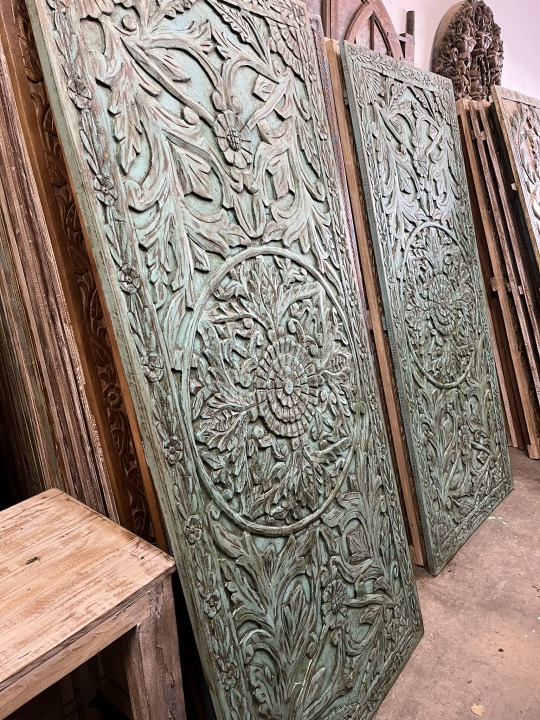
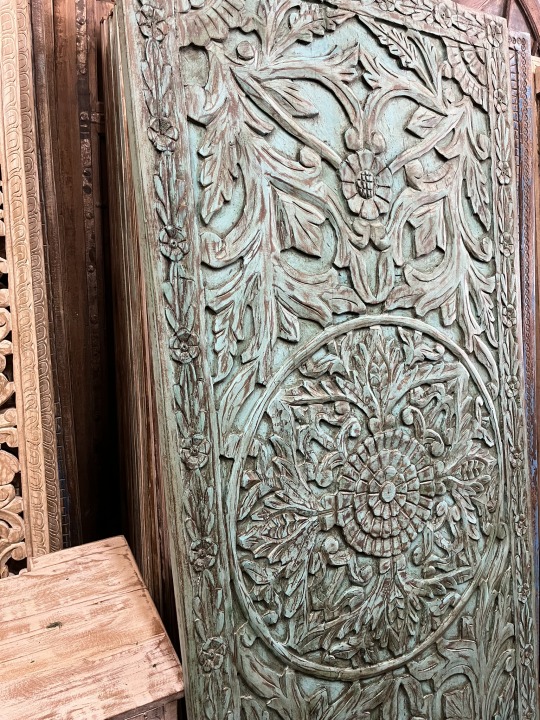

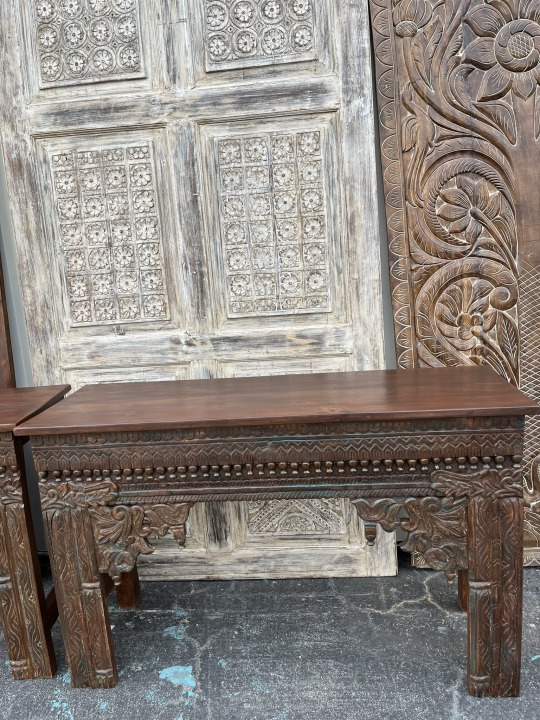
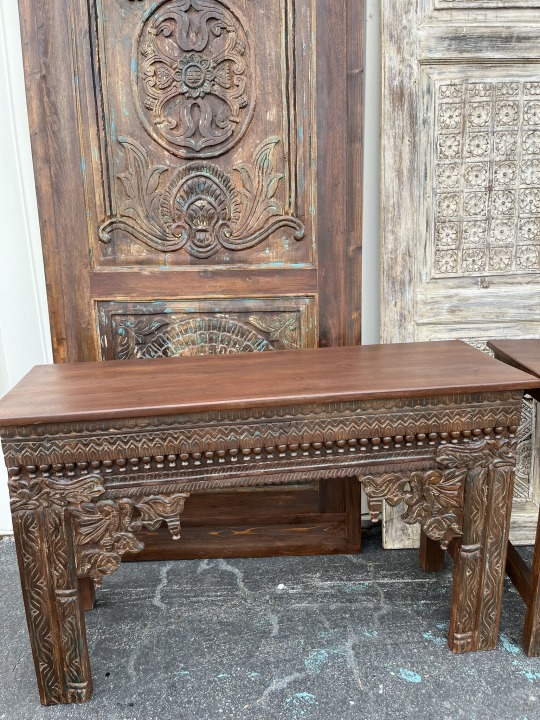
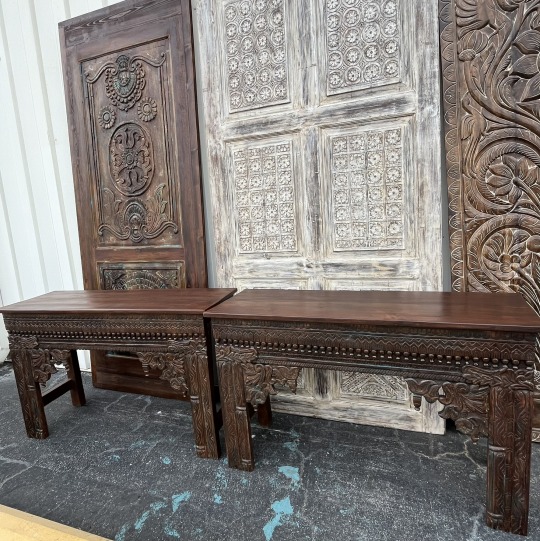
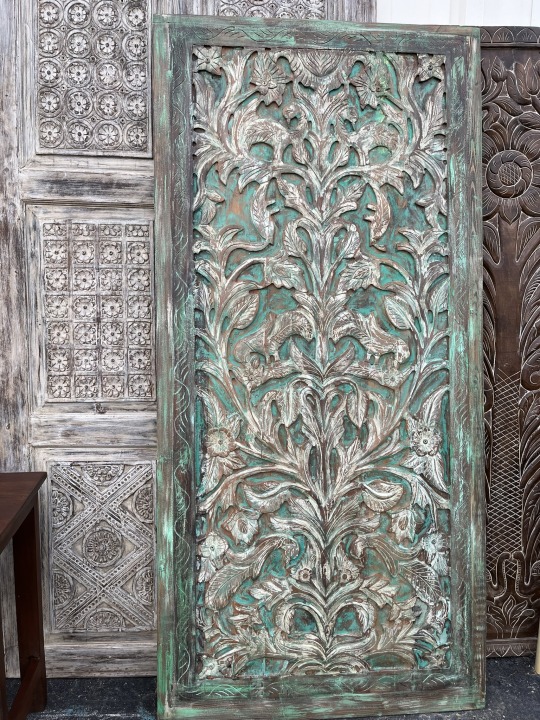
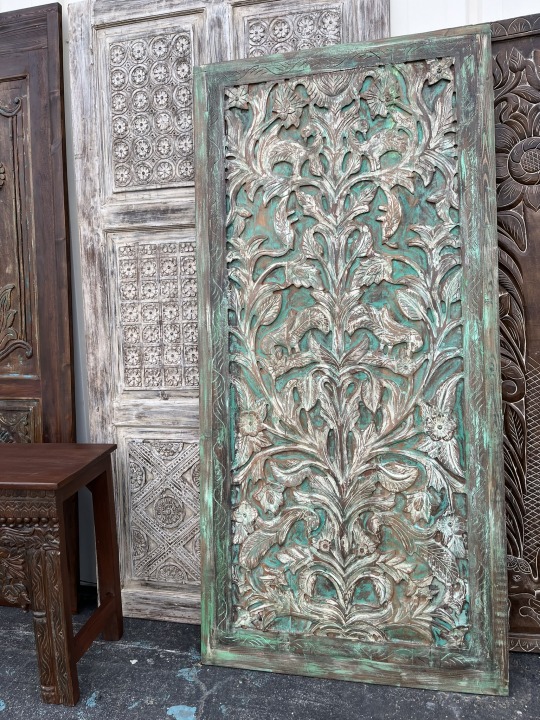

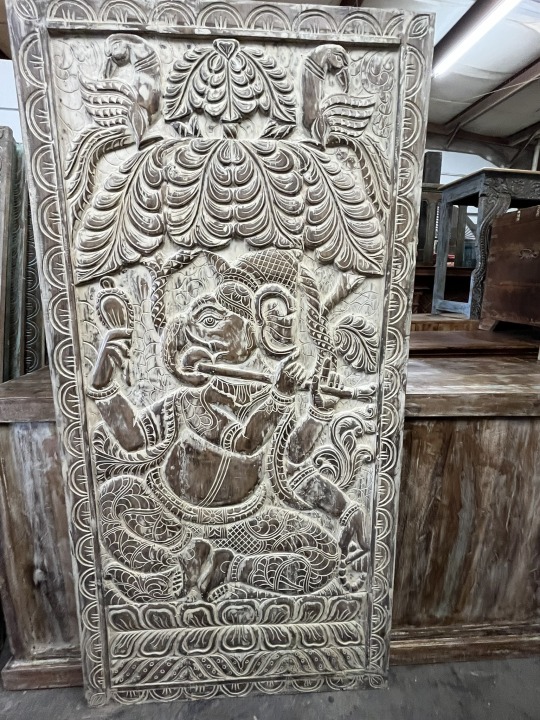
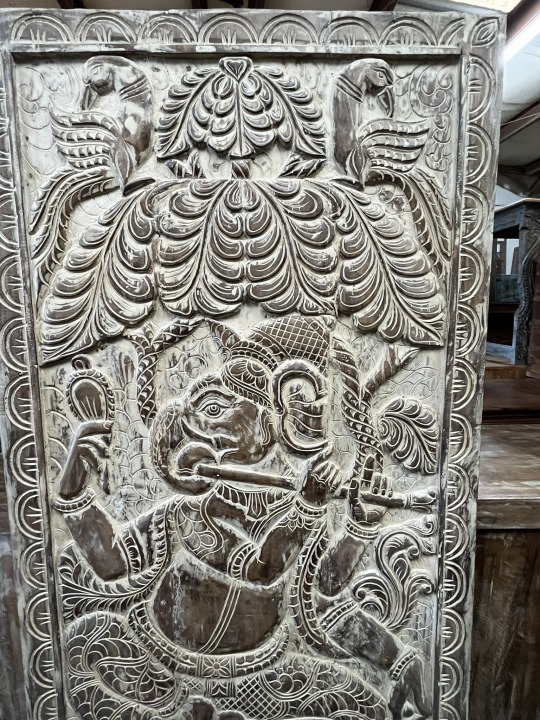
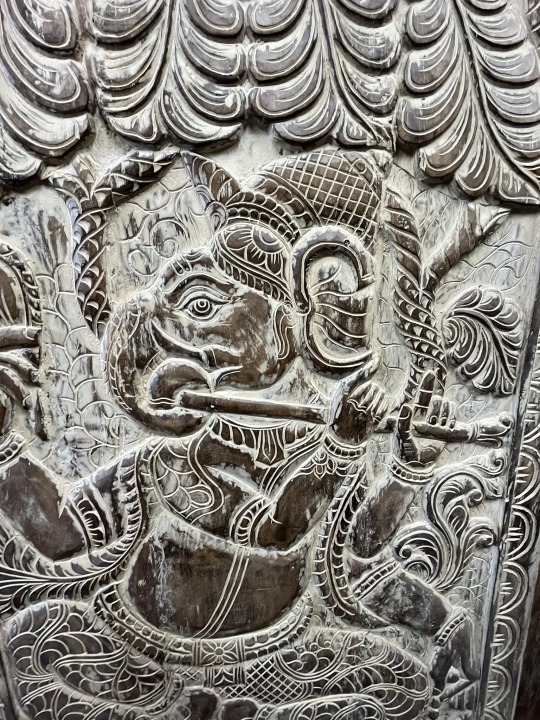
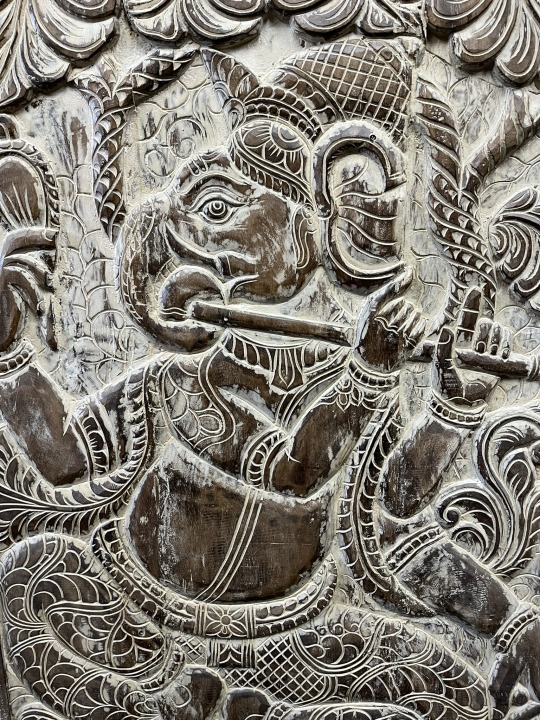
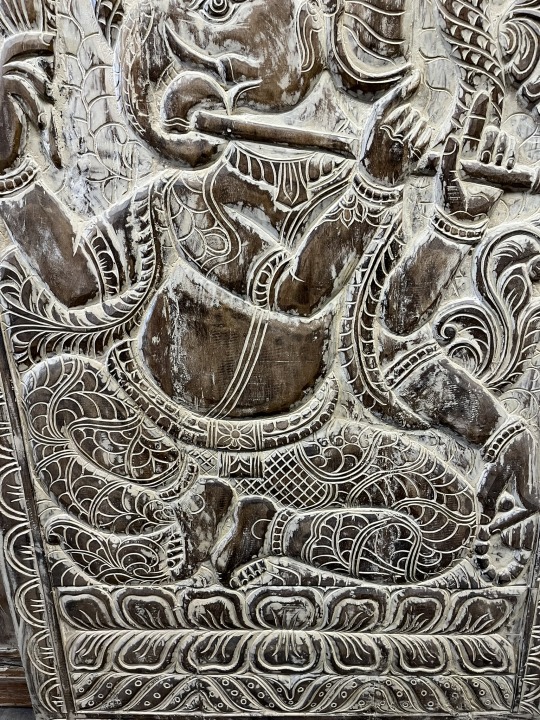
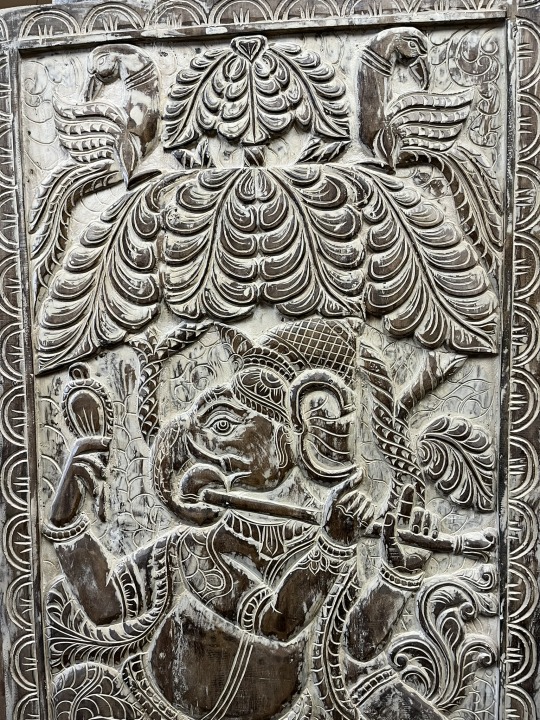
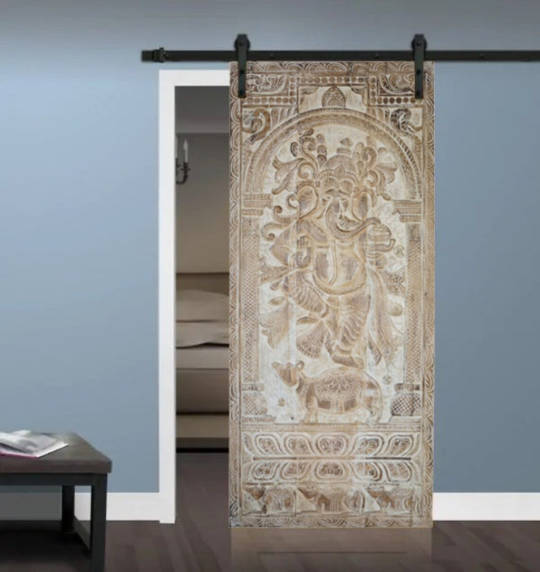
Click here to view the collection
Old-world spirituality-inspired furniture and decor evoke a wellness charm infused with a sense of wanderlust. The space radiates beautiful sacred energy, with carved barn doors and carefully placed artifacts adding touches of exotic artistry. In this yoga sanctuary, distinctive artistic decor elements seamlessly come together, guided by the energies of the universe. The bedroom becomes a love sanctuary, an ideal space to express passion. A cohesive color theme ties the eclectic design elements together harmoniously.
The harmony of color blends with the subtle hues and carved textures of Radha Krishna barn doors, while the intricate headboard, fashioned from an antique Indian archway, adds a touch of historic elegance. The cusped openings are adorned with modern artwork in vivid colors, setting a romantic mood and infusing creative design into the bedroom. Antique furniture pieces further enhance the space, adding depth and character to the decor.
https://cdn.shopify.com/s/files/1/0041/9948/1390/files/Template-_Carved_Door_Panel_13_480x480.jpg?v=1657967881
Incorporate passionate art that stirs emotions while maintaining the harmonious, eclectic vibe. Let the vintage carved wood wall art reflect your inner spirit, with unique handmade creations inspired by old-world designs, adding a touch of sentimentality and personal meaning to the space.
Vintage rustic carved woods provide a balanced contrast to modern gadgetry and sophisticated appliances, grounding the space with natural elements. Antique doors, repurposed as headboards or office entryways, feature ancient symbols of good luck and protection, while their patinas and studded metals echo stories of the past. This rustic sophistication of vintage carved doors combined with a relaxed return to basics and a connection to Mother Earth, is essential in creating a healing home.
A meditation space beautifully adorned with calming woods, subtle hues fosters a positive energy flow. The walls, lined with wood carved panels and sculptures of Ganesha, Krishna, and Buddha, evoke the ethereal ambiance of ancient sacred caves. This serene setting nurtures your spiritual aura, promoting healing at the deepest level of consciousness.
The ancient wisdom of the Vedas comes to life with the gentle sound of Sanskrit chants and the soothing strum of the sitar in the background. Soft candlelight casts a tranquil glow, enveloping the space in peacefulness. In one corner, an authentic Indian damchia chest stands adorned with cherished photographs of loved ones, adding a personal touch to the serene atmosphere.
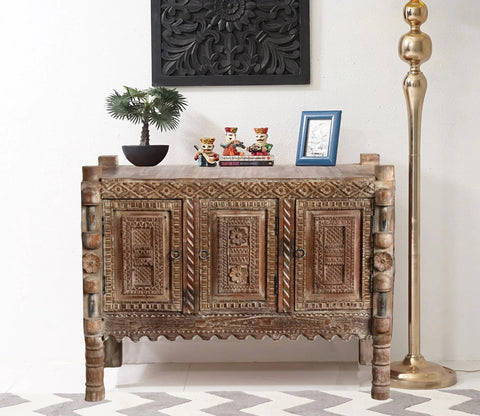
Nature possesses a mysterious yet captivating ability to relax and heal. Surrounded by lush green trees, your patio becomes a sanctuary with a beautifully carved wooden swing, adorned with colorful toss pillows, and hand-crafted granite stone statues. An antique Jaipur door adds a touch of brilliance, framed by vibrant ivy and fragrant flowers. This garden offers an escape to nature, where you can unwind after a stressful day or bask in the sun on a lazy Sunday afternoon. Design elements artfully connect you to the beauty of nature, creating a harmonious outdoor retreat.
0 notes
Text
The Art and Craftsmanship Behind Radha Krishna Marble Statues

The Radha Krishna marble statue is a profound symbol of divine love and spirituality, revered in Hinduism. Beyond its religious significance, these statues are a testament to the rich artistic traditions and craftsmanship that have flourished in India for centuries. Carved from pure white marble, these statues blend spirituality with artistry, capturing the essence of devotion and love through detailed craftsmanship. The art of creating these statues is an intricate process that requires immense skill, patience, and attention to detail, making each piece a work of art that transcends time.
The Symbolism of Radha Krishna
Radha and Krishna are iconic figures in Hindu mythology, symbolizing divine love and the soul’s eternal longing for union with the Divine. Krishna represents God, while Radha symbolizes the soul that yearns for divine love. Together, they are revered as the epitome of love, devotion, and beauty. The image of Radha and Krishna in marble captures this celestial bond, offering a powerful visual representation of love that goes beyond the physical realm.
The Marble Selection Process
The creation of a marble Radha Krishna murti begins with the selection of the finest quality marble. Marble is highly valued for its durability, smooth texture, and natural beauty. Artisans typically prefer white marble from places like Makrana, Rajasthan, which is known for producing marble of exceptional quality. This particular marble is renowned for its pure whiteness and longevity, making it ideal for religious statues.
Once the marble is selected, it is meticulously inspected for any imperfections, ensuring that the final product will be flawless. This process is crucial, as any flaws in the marble can disrupt the aesthetic and structural integrity of the statue.
The Carving Process: A Symphony of Skill and Precision
Carving a Radha Krishna statue from marble is a laborious process that requires a high level of expertise. Master sculptors with years of experience use traditional tools such as chisels, hammers, and rasps to shape the marble block into a lifelike representation of Radha and Krishna. The artistry involved is remarkable—every detail, from the delicate features of the faces to the intricate designs on their garments and ornaments, is meticulously carved with precision.
The expressions of jugal Radha Krishna marble murti are often the most challenging and vital aspects of the statue. Krishna’s serene smile and Radha’s loving gaze must reflect the divinity and warmth of their bond. Sculptors often spend weeks perfecting the facial features, ensuring that the emotions of the deities are conveyed through their expressions.
The folds of the garments, the jewelry, and the accessories are also intricately carved. Each piece is designed to evoke a sense of movement, as if Radha and Krishna are captured in a moment of divine dance. The level of detail is extraordinary, with every curve and line contributing to the statue’s overall beauty.
Hand-Painting and Polishing: Adding Life to Marble
Once the statue is carved, artisans hand-paint the deities, adding vibrant colors to their clothing, ornaments, and accessories. Gold leaf and other decorative materials may be used to highlight certain aspects, enhancing the divine appearance of the statue. The eyes, in particular, are carefully painted to convey depth and emotion, bringing the deities to life in a way that resonates with devotees.
After painting, the statue undergoes a rigorous polishing process. This step ensures that the marble's natural sheen is accentuated, giving the statue a radiant and lifelike quality. The smooth, polished surface of the marble reflects light beautifully, enhancing the spiritual aura of the statue.
The Spiritual and Artistic Significance
A marble Iskcon Radha Krishna Statue is not just a work of art; it is a spiritual object that holds deep meaning for devotees. These statues are often placed in homes, temples, and sacred spaces, serving as a focal point for prayer and meditation. The artistic beauty of the statue enhances the spiritual experience, reminding devotees of the divine love and connection between Radha and Krishna.
For collectors and devotees alike, these marble statues are cherished for their timeless beauty and craftsmanship. Each statue is a unique piece, handcrafted with dedication and care, ensuring that it will stand the test of time both as an art object and as a symbol of divine love.
Conclusion
The creation of Radha Krishna marble statues is an art form that embodies devotion, skill, and tradition. From the careful selection of marble to the intricate carving and detailed painting, each statue is a masterpiece that reflects the rich cultural heritage of India. These statues serve not only as symbols of divine love but also as testaments to the exceptional craftsmanship that has been passed down through generations. Owning a Radha Krishna marble statue is akin to owning a piece of spiritual and artistic history, one that continues to inspire devotion and admiration for centuries.
0 notes